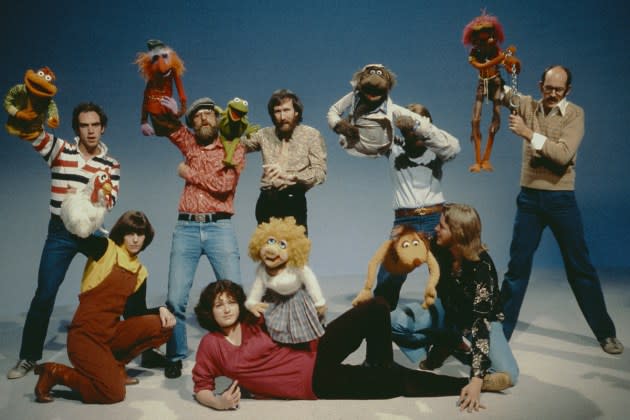‘Jim Henson Idea Man’: How Archival Footage and Family Anecdotes Helped Ron Howard Preserve a Legacy

When director Ron Howard was looking to tell Jim Henson’s story for his next documentary, he sat down with Henson’s surviving children for their permission to tell the story of the man behind “The Muppets.”
Not only did they give him their full approval and access to Henson’s archives, but they also appear in the documentary “Jim Henson Idea Man.”
More from Variety
The film combines archival material with talking head interviews with Rita Moreno, Jennifer Connelly, Henson’s children and longtime collaborator Frank Oz. There is plenty of archival footage that helps tell Henson’s story, and there’s a look at his 1965 Oscar-nominated short film “Time Piece.”
The main thread was the family story.
Speaking with Variety, Howard said after meeting Henson’s children, Lisa, Cheryl, Brian and Heather, he was fascinated by the stories they told about their upbringing. “I said, ‘Well, we can celebrate the characters we know. We can reveal this tremendous volume of work that we don’t know about, but we can connect it with something we relate to, which is life is complicated and families are interesting because things shift and change.’ I’s a very specific situation because they’re surrounded by the whole circus that was Jim Henson and the Muppets.”
Howard wanted to maintain Henson’s aesthetic of not taking itself too seriously and keep the story as engaging and funny as possible. With a lot of the story told through the archive, Howard relied on the footage.
Luckily, Henson saved everything: Audio, production files, media material, photography, his journals, experimental films, short commercials and so much more were well-documented at the Jim Henson Company, headquartered in Hollywood with the archives in New York City. It was all there for Howard to tell the story.
Karen Falk, Director of the Archives for the Jim Henson Company since 1992 and based in New York City helped preserve Henson’s legacy. She was a key player assisting Howard navigate the archival footage.
Said Falk, “We have thousands of photographs and hundreds of hours of footage of interviews, behind the scenes. So we started working with his team, and delivered the personal stuff first because that’s most of the material people haven’t seen.”
Falk has also been part of The Jim Henson Legacy, the non-for-profit that preserves and celebrates Jim Henson’s work. Over the last five years, they had been digitizing many of Jim’s early projects. “We identified the early film work and things that we felt needed to be digitized for long-term use. So, much of that was already done,” Falk says.
“Time Piece” was also ready to be used because it had been recently been restored. However, some interviews were still on cassette tape, and VHS that had not been digitized. “We worked with Ron’s team to identify which ones might be interesting [for the documentary], so we had those digitized,” says Falk.
In some cases, the sound, particularly with his wife Jane, was not in pristine quality. “Ron’s team did a lot of work to restore that sound to make the material as accessible as possible.”
As Howard’s team watched more and more, they’d come back for specific asks.
“You go on a journey of discovery and you have these interviews and learn from them and build on them,” said Howard.
One example was with Jennifer Connelly. During an interview that features in the film, she talked about working on Henson’s 1986 film “Labyrinth,” and being in a creature rig. “They didn’t necessarily know to ask for it until they had that interview. So, the interviews helped inform what they were asking for, and it helped us zero in.”
Best of Variety
Sign up for Variety’s Newsletter. For the latest news, follow us on Facebook, Twitter, and Instagram.

 Yahoo Lifestyle
Yahoo Lifestyle 